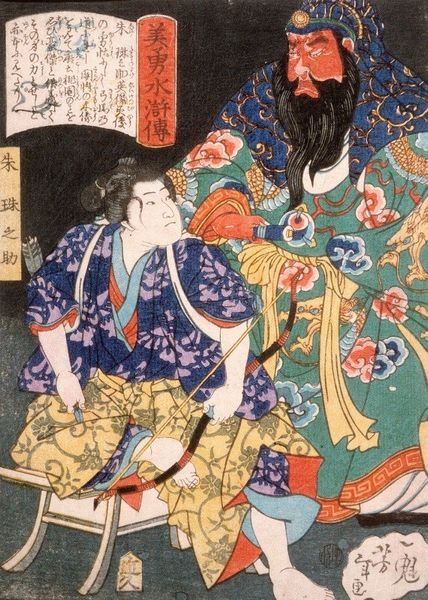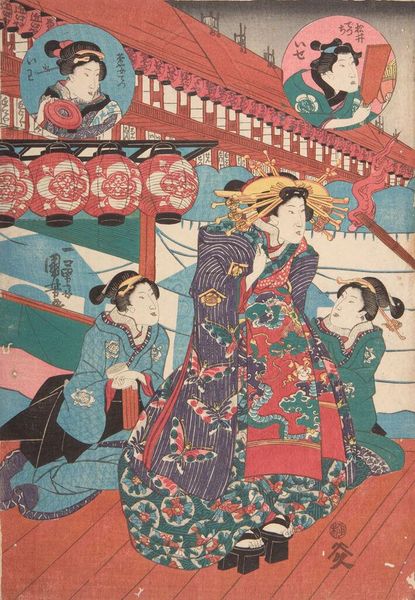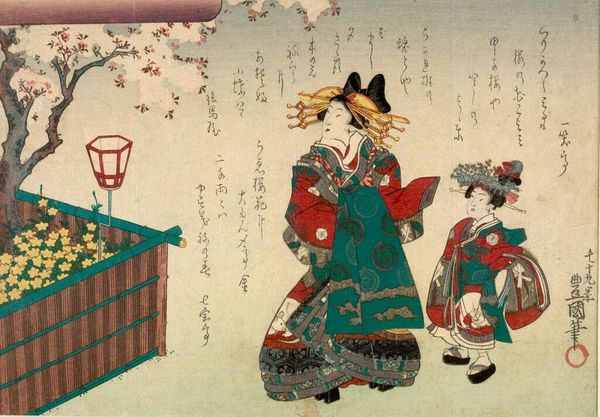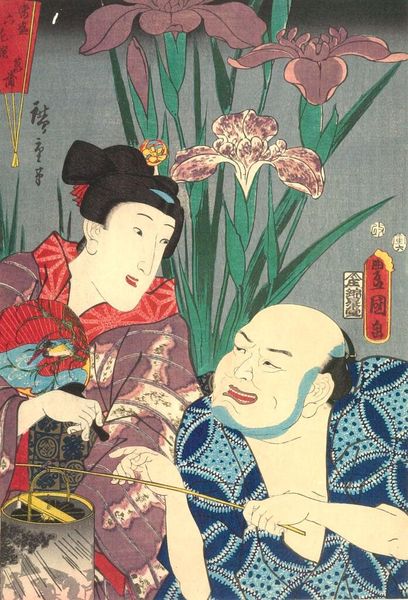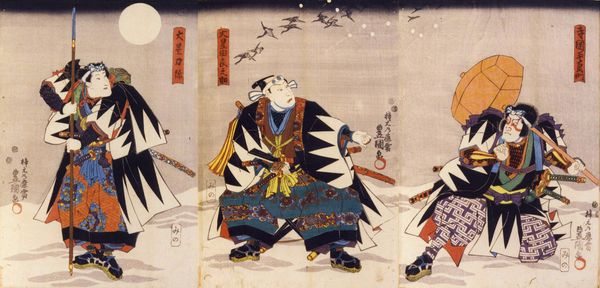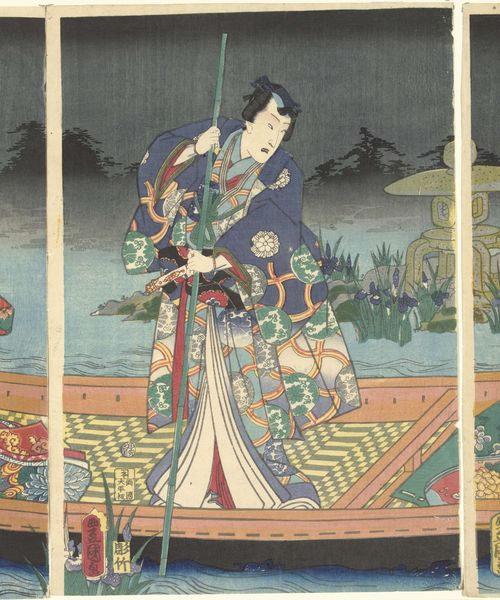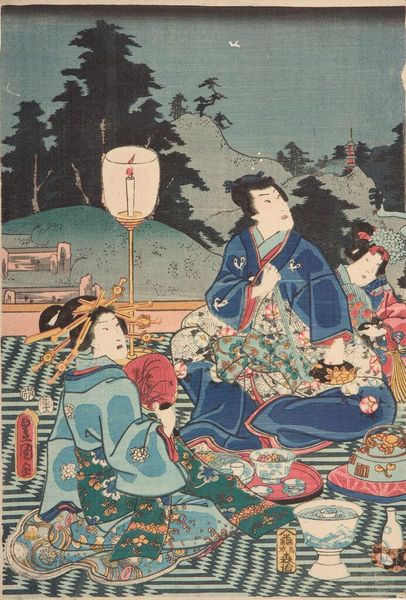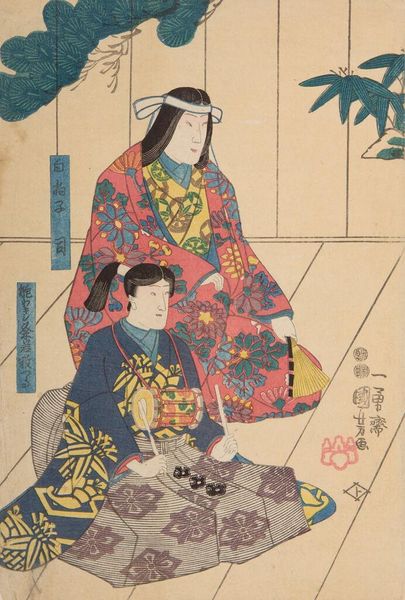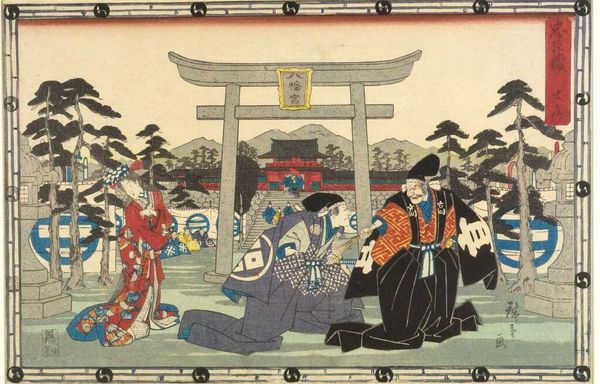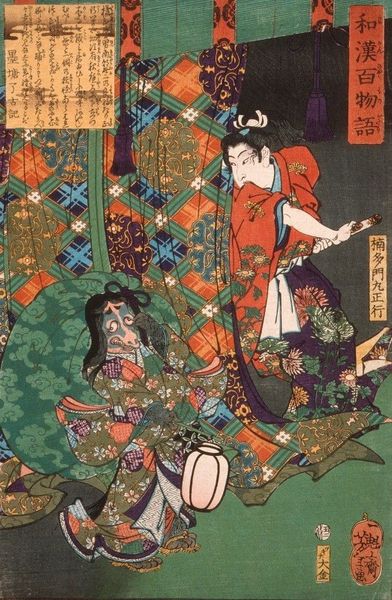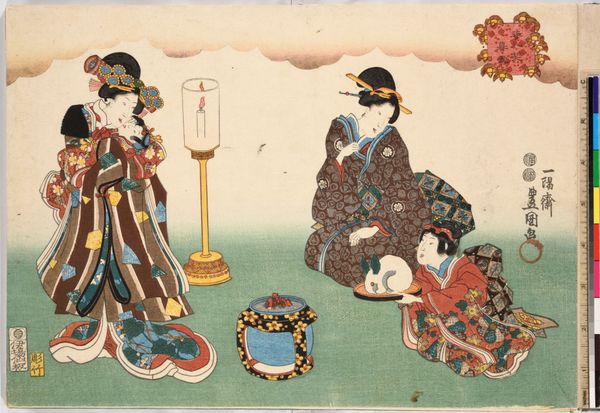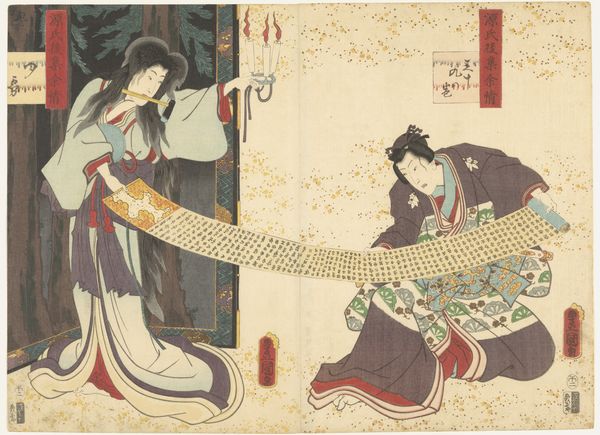
Shūka Bandō I as Shirabyōshi Hanako, Kichisaburō Arashi III as Konkara Bō, and Sanjūrō Seki III as Seitaka Bō (Kyō-ganoko Musume Dōjō-ji) 1852
0:00
0:00
print, woodblock-print
# print
#
asian-art
#
ukiyo-e
#
figuration
#
woodblock-print
#
genre-painting
Copyright: Public domain
Utagawa Kunisada created this woodblock print which depicts three actors in character from the Edo period Kabuki theatre, a form known for its rich blend of music, drama, and dance. Kabuki emerged during a time of strict social hierarchies, and became a vibrant, often subversive, platform for cultural expression. Here, Shūka Bandō embodies Shirabyōshi Hanako, a female dancer, while Kichisaburō Arashi and Sanjūrō Seki play the roles of Konkara Bō and Seitaka Bō, respectively. During the Edo period, Kabuki was largely dominated by male actors who took on both male and female roles in a practice known as Onnagata. Consider the complexities of gender representation within this historical context. This print celebrates the emotional intensity and performative nature of Kabuki, offering insights into the social and artistic dynamics of its time. It allows us to reflect on the themes of identity, performance, and representation that continue to resonate today.
Comments
No comments
Be the first to comment and join the conversation on the ultimate creative platform.
